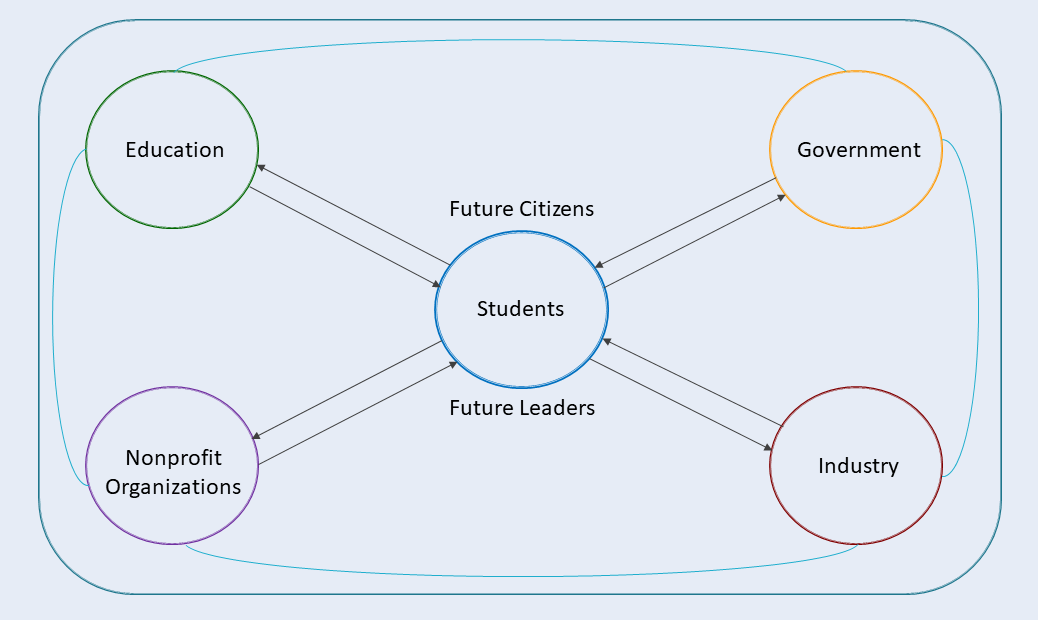Project overview
Project Objectives
- How can we improve students' spatial thinking and geospatial technology skills through
citizen mapping while preparing them for the STEM workforce of the future?
- How does the use of spatial thinking, geospatial technologies, and citizen mapping enhance student engagement in and knowledge of their communities?
Background
Supported by a grant from the National Science Foundation, this project focused on advancing geospatial thinking and technologies in grades 9-12 through exploration of citizen mapping, community engagement, and career preparation. The project seeks to raise awareness of the application of emerging, dynamic technologies that are used in a range of social science and STEM disciplines as well as by citizens in their everyday lives. By engaging students in real world issues in the context of their own neighborhoods, they are gaining knowledge and tools for enhancing their communities as well as exposure to the many career possibilities in high growth STEM sectors.
This study engaged students at a public high school in Toledo, Ohio, a diverse region facing a number of socio-economic challenges in 2015 and 2016. Using inquiry and problem-based learning, high school students participated in two summer workshops designed to introduce them to recent advances in geospatial technology, especially in relation to understanding their communities and preparing them for the STEM workforce of the future. Students were guided through the scientific process of inquiry, synthesis, analysis, interpretation, and evaluation. They proposed inquiry questions and collected data through fieldwork in the community and from secondary sources to produce maps in an open source mapping program. Ultimately, students presented their findings and recommendations to key individuals and organizations in the community.
Outcomes
In addition to scholarly publications and presentations, our primary goal was to create curriculum modules based on the topics that emerged from the students' interests during the two summer workshops. All of the modules include experiential learning opportunities that can be applied in diverse geographic settings. In addition, teachers and students in both the sciences and social studies can use these interdisciplinary modules to think spatially and appreciate the use of geospatial technologies in addressing community challenges.
Future Goals
We would like to engage science and social studies teachers in using and adapting the existing curriculum modules during summer professional development workshops. While we would like to serve as mentors as the teachers integrate the modules into their own classrooms, we would also like for them to propose and create new modules based on their curricular goals and needs
Partners
"Partnerships are very important because if you think about the needs within a community or a neighborhood, no one organization could address all of those needs by itself" (formerly an economic development specialist for the City of Toledo, and one of our project collaborators).

Our model for advancing and broadening participation of students in STEM centers the students as future citizens and leaders in the community, and provides opportunities for interactions between them and partners in education, government, nonprofit organizations, and industry. One student participant in Summer 2015 remarked, "My favorite thing was when we did the presentations. We had the Mayor and a whole bunch of people there." Another student said,"The highlights from the program are that they brought in people from different corporations to talk about their jobs and how they use the community in their jobs."
This project would not have been successful without the generosity of all of our partners listed here.
Education
- The Toledo Public School District
- Jesup W. Scott High School
- Teacher Advisory Committee (Elizabeth Buckholtz, Dr. Dave Harms, Dr. Matt Hollstein, Jackie Kane, Meighan Richardson, Gloria Wu)
- Project Evaluator, Dr. Hilarie Davis
- University of Toledo
- STELAR Resource Center
Nonprofit Organizations
- United Way
- Schools as Community Hubs
- The Fair Housing Center of Toledo
- Cherry Street Legacy Project
- Toledo Zoo & Aquarium
- Toledo Museum of Art
Government
- Former Mayor Paula Hicks-Hudson of Toledo, Ohio
- Department of Neighborhoods, City of Toledo
- Toledo Lucas County Plan Commission
- Toledo Area Rapid Transit Authority (TARTA)
Funding
This project was supported by a grant from the National Science Foundation, Innovative Technology Experiences for Students and Teachers (ITEST), Research on Learning in Formal and Informal Settings, Directorate for Education & Human Resources (EHR).


